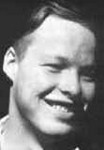
Everett Ruess
Missing Since November 1, 1934
Distinguishing Marks/Features: Unknown
Everett Ruess was an artist who spent time alone in the wilderness. In November of 1934 (the exact day is unknown), he was seen in Escalante Canyons, Utah, as he traveled towards Arizona for the winter. Later, his two burros were found corralled with gear in Davis Gulch. Ruess’s probable last camp was found in Cottonwood Canyon, and footprints were followed to the base of Kaiparowits Plateau. “Nemo, 1934” was found scratched into the wall of a nearby cave.

Richard David Marlow
Missing since July 18, 1944 from Etobicke, Ontario, Canada
Marks, Scars: Scar at edge of hair on one temple.
On the evening of July 18th, 1944, Richard Marlow went missing and has never been found, nor his body recovered. The small, shy boy was riding his bicycle in front of his house on Beta Street, Etobicoke, with his brother inside the house. The bike was found at the house when Richard’s mother returned home that evening but Richard had vanished. Etobicoke Police conducted a search, as did the army militia, with no results. Richard was a good child at home and in school, with no reason to run away.
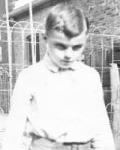
Kenneth Warren Hager
Missing since April 9, 1947 from Baltimore, Maryland
Marks, Scars: Hager has a scar on his head and has epilepsy.
Kenneth Hager walked out the door at 1637 Lansing Avenue, Baltimore, Maryland after taking a piece of ice from his mother. Hager had disappeared once before about 2 years prior to this disappearance. At that time he had made his way back to his old home located at 2100 block East Chase Street. He was found talking to a neighbor and had suffered what appeared to be cigarette burns from a person he described as a “bad boy”. He enjoyed cars and would, therefore, get into any car, if he was asked to. He was spotted on a few occasions just after his disappearance. A neighbor of the Hagers’, recognized him at the corner of Dundalk and Eastern Avenues that afternoon. Also, a family friend of the Hagers’, told Mrs. Hager that in 1962 a young man about 26 or 27 was seen in a grocery store in Dundalk. He was unable to speak, but had handed her a grocery order to fill, and she did so. He never returned to the store and no one has seen or heard from him since.
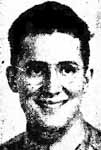
Paul Gordon Love
Missing since October 2, 1947 from Galesburg, Illinois
Distinguishing Characteristics: White male.
Paul Love disappeared from the University of Illinois Galesburg branch on October 2, 1947. Paul Love of Hinsdale registered at the U of I branch campus on the grounds of the former Mayo Hospital in Galesburg following his release from the Army during World War II. He was last seen in downtown Galesburg where he attempted to cash a check at a music store for the purchase of a record. The request to cash the check was declined and Love said he would be back later. The state police mobile laboratory carrying grappling and diving equipment was brought in to help search both Lake Storey and Lake Bracken. When the search of the countryside failed to produce any results, local, state and federal authorities continued the search with no results. Six years after the disappearance of Paul Love, human bones were discovered on a farm three miles east of Wataga. Naturally speculation was that the remains might be those of the missing student. Another report linking the bones to the missing student was the examination of a .22-caliber Marlin rifle that was discovered near the scene of the bones. Finally in early March 1953 it was concluded the remains were not those of Love. The conclusion was arrived at by comparison of dental records.
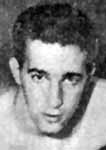
Ronald Henry Tammen, Jr.
Missing since April 19, 1953 from Oxford, Ohio
Distinguishing Characteristics: White male. Brown hair, brown eyes and muscular build.
Tammen was last seen in old Fisher Hall, at Miami University, in Oxford, Ohio on April 19, 1953. Ronald Tammen was a hardworking Miami University student until the night on April 19, 1953, when he walked out of Room 225. About 20:30 he entered his room after returning from a road engagement with the Campus Owls, a dance band for which he played string bass. Outside sat his 1938 Chevrolet sedan. It was reported that he heard something that disturbed him, and he went into the hall to investigate. He left his wallet, car keys and personal items on his desk. He also left the lights on, a book open, the radio playing and his clothes in the closet. His bank account, with about $200, remained active. Authorities checked all bus, rail and air terminals. The Air Force ROTC sent 400 men to help students search the countryside. Friends and family, from Maple Heights, near Cleveland, said Mr. Tammen wouldn’t leave without telling them. At first, police developed an amnesia theory, but later they did consider that he might have deliberately disappeared. Later that night Mrs. Carl Spivey in Seven Mile, about 15 miles east of Oxford, heard a knock on her door. She saw a young man — who fit Tammen’s description — standing outside. When she opened the door, he asked her how to get to the bus station. As there was no bus station in Seven Mile, she told him to go to Hamilton. She noticed he had a smudge of dirt on a cheek and his eyes were vacuous. Snow was on the ground that night, but he wore no coat or hat. She shut the door and expected to hear his car start, but it didn’t. Then she realized the young man was walking. There’s every belief he was Ronald Tammen. The supposition is that he had an attack of amnesia.
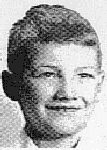
Clifford Edward Sherwood
Missing since October 21, 1954 from Verdun, Quebec Canada
Marks, Scars: Sherwood has a scar on the back of his left hand.
Sherwood disappeared on his way to school with his friend, Georges Gumbley. At the time, Clifford was living alone with his mother in Verdun. His father had the custody of Clifford’s four sisters and they were all living in the Vancouver area. He is thought to have been abducted by his now-deceased non-custodial father. He was estranged from Clifford’s mother and lived in B.C. when Clifford vanished. Clifford had a distinct stutter and made a puzzling phone call to his aunt the next day. “He said: ‘Auntie, Auntie Hilda!’ Then the line went dead.
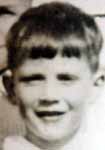
Howard Newell
Missing since January 22, 1955 from Yarmouth, Nova Scotia, Canada
Classification: Endangered Missing
On January 22, 1955, Howard Newell vanished while walking home from a woodlot where members of his family were cutting firewood. In the days and weeks that followed, the largest search in Yarmouth County history unfolded in the woods and marsh areas of Little River Harbour. More than 1,000 searchers scoured the area searching for the little boy, but there was never any trace of him. The police concluded that the boy had likely drowned and his body had been washed out to sea.

Luciano Cobianchi
Missing since July 10, 1956 from Domegge Di Cadore, Belluno, Italy
Distinguishing Characteristics: White male. Straight blond hair; light-colored eyes.
Cobianchi was last seen while on a holiday in Domegge Di Cadore, Italy on July 10, 1956. In the autumn of 1955 Cobianchi entered the seminary of Casier di Treviso On July 10, 1956 the group of young seminarians left Casier di Treviso to go to Domegge di Cadore, Belluno, Italy for a short holiday. The following day, while the lunch was being prepared, the boys went to visit the church of Domegge. They were accompanied by a superior of the seminar. They went further to the Piage by the Val di toro road to reach the refuge of Padova. After a hundred of meters they were called back as the lunch was ready. They all came back except Cobianchi, who told his friends he was going to go to the top of the last summit and then would come back. But instead he disappeared.

Thomas Eldon Bowman
Missing since March 23, 1957 from Upper Arroyo Seco Canyon, Pasadena, Los Angeles County, California
Dentals: Available. Gold bands on back of his teeth, several silver fillings.
On March 23, 1957, Bowman, along with his family was hiking in the Arroyo Seco Canyon area. When the family arrived back at the car, Bowman was no where to be found. Law enforcement was notified and numerous searches were done, to no avail. In March 1970, Mack Ray Edwards surrendered to police and confessed to murdering 6 children between 1953 and 1970. He once claimed to have killed 18 but in 1971 while on death row he committed suicide. Edwards confessed and was convicted of the murder of Gary Rochet, Donald Allen Todd, and Stella Darlene Nolan. He also confessed to killing Brenda Jo Howell, Donald Lee Baker, and Roger Dale Madison. He was never charged with the murder of these children because their bodies haven’t been found. He is suspected in the disappearances of Bruce Kremen, Karen Lynn Tompkins, and Thomas Eldon Bowman.
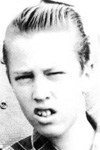
Jesse Work
Missing since February 6, 1959 from Hemet, Riverside County, California
Distinguishing Characteristics: White male. Sandy blond hair; green eyes.
Jesse and his 15 year old female friend, Joyce Ramsey went missing together. They were last seen late in the night of February 6, 1959, when they dropped off a friend after attending a party. Work’s convertible was found abandoned on a dirt road near Hemet the next day. Jesse Work was an apprentice lather at the time. Frank Phillip Kretz confessed to the murder of both victims and the body of Joyce Ramsey was found north of Indio in 1971, but Jesse’s body was never found.
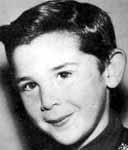
Bruce Kremen
Missing since July 13, 1960 from the Angeles National Forest, Los Angeles County, California
Clothing: Blue jeans and a white t-shirt with the words “Summer Fun Club” printed on the front.
Bruce was last seen on July 13, 1960 near Buckhorn Flat in the Angeles National Forest. A group of 80 Los Angeles YMCA camp children were led on a supervised hike near Buckhorn Flat in Angeles National Forest. Bruce was missed only minutes by his buddies. They thought he had turned back. In March 1970, Mack Ray Edwards surrendered to police and confessed to murdering 6 children between 1953 and 1970. He once claimed to have killed 18 but in 1971 while on death row he committed suicide. Edwards confessed and was convicted of the murder of Gary Rochet, Donald Allen Todd, and Stella Darlene Nolan. He also confessed to killing Brenda Jo Howell, Donald Lee Baker, and Roger Dale Madison. He was never charged with the murder of these children because their bodies haven’t been found. He is suspected in the disappearances of Bruce Kremen, Karen Lynn Tompkins, and Thomas Eldon Bowman.

Lyndal B. Ashby
Missing since October 23, 1960 from Hartford, Ohio County, Kentucky
Marks, Scars: Scar above right eye; 3″ scar on left forearm; 3″ scar on right forearm; 1″ scar on left hand; 5″ scar on right thigh; and 1″ scar on left knee. Broken jaw, fractured ribs.
Lyndal Ashby was last seen in Hartford, KY on October 23, 1960. He may have been headed to California.

Scott Andreas Douglass Sims
Missing since December 9, 1961 from Wichita Falls, Texas
Clothing: A black coat over a black turtleneck sweater, blue jeans and a black knit cap. Andy wore glasses.
On December 9, 1961, Andy Sims vanished. Andy was home between 12.00 and 12:30 when his mother called the house and talked to Donald. Donald reported Andy left the house between 12:45 and 13.00 to go out to play. Ellen Sims returned home about 14:30. Members of Andy’s family were the first to search for him. The boys’ mother sent Donald out to look for his brother, and other family members joined in the unsuccessful search. One person reported seeing someone who matched Andy’s description at the Boy Scout Hut near Lake Wichita about 15.00, December 9, just a few hours after Andy left his house. Lake Wichita was searched several times, and it was dragged. Nothing turned up any trace of Andy despite searches by land and by air. Some of Andy’s friends told police he liked to play in some caves near Fairway Boulevard, but checks there turned up nothing.

Keith Bennett
Missing since June 1964 from Longsight, England, United Kingdom
Distinguishing Characteristics: White male. Blond hair. He wears glasses.
In 1964 the infamous Moors Murderers approached a young boy at a fair. His name was Keith Bennett. Myra Hindley dropped some boxes she was pretending were Christmas presents and asked Bennett to pick them up. Pretenending she needed help to unload them at her home, she asked Keith to go with her and Ian Brady. Thinking he was helping, Keith got in the car. The car was driven to Saddleworth Moor. Hindley claimed she had lost a glove and asked Keith to help look for it. Brady then brought Keith with him to a remote area. Half an hour later Brady returned, alone. He had sexually assaulted Keith and strangled him with a piece of string before burying him. When Hindley and Brady were arrested they denied murder. They went to prison. Years later they confessed and attempted to help locate the bodies. They found four of their five victims. Hindley is now deceased. Neither of them could remember where they buried Keith Bennett. All that is known is that his body is buried somewhere on Saddleworth Moor near a stream.

Terry Lee Westerfield
Missing since September 12, 1964 from Fayetteville, Cumberland County, North Carolina
Scars: Appendix scar
According to police reports, the boys’ stepfather dropped Terry and his younger brother, Alan, off at Fayetteville’s Broadway Theater, on Hay Street, at 17:30. The stepfather stated he returned to the theater about 20.00, and the boys were gone. When the boys vanished, authorities were not sure if the brothers ever made it to the theater. Neither child was ever heard from again and police think the boys were killed the day they disappeared. Heavy rains from hurricane Dora late that night and the next morning hampered the search.

James A. McQueary
Missing since October 15, 1964 from Fairfax, Ohio
Clothing: Blue & yellow horizontal striped polo shirt, brown trousers. Tan high topped shoes.
October 15th, 1964, people saw Jimmy McQueary and best friend Johnny Hundley around the village. They were at the Frisch’s Mainliner Restaurant located at 5770 Wooster Pike, Cincinnati on their way to John’s house. The boys never came home and were reported missing at 8:30pm. The boys were best friends and it would be uncommon to find either boy without the other. Three years after the disappearance a 17 year old said he could lead police to the crime scene. He was stationed in San Diego when he told a minister he murdered the boys. The young man lived in this home in Fairfax when the boys disappeared. He says he stabbed them to death buried them across the street. Police never found them. The AWOL Marine then said he made up the story to get out of the service.

Ronald Joe Cole
Missing since May 1, 1965 from Fillmore, Ventura County, California
Marks, Scars: Scar on left cheek.
Cole was last seen on May 1, 1965 at his home in Fillmore CA. Cole reportedly came up from San Diego in 1965 to stay with his half-brother, David LaFever, in Fillmore while he looked for a job and that was the last time he was seen alive. Foul play is suspected.
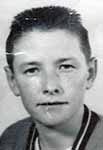
Archie Joseph Laroque
Missing since November 22, 1965 from Laroque Lake, Saskatchewan, Canada
Clothing: Winter clothing, winter boots, and white coveralls.
On the 22nd of November, 1965, Archie Laroque was hunting with six other persons near Laroque Lake, 25 miles east of Carrot River, SK. The hunting parties split up and Archie was last seen walking in an area alone. Extensive ground and air searches were conducted, however, Laroque was never located.
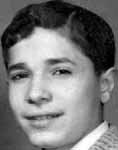
Anthony Peter Tumolo
Missing since October 15, 1966 from Philadelphia, Philadelphia County, Pennsylvania
Scars: Scar on right cheek.
Anthony was last seen on October 15, 1966 leaving his house on his bike, to go to a friend’s house. The boys had spent the morning delivering “Inquirer” papers. Afterward, they hung out with friends on the steps of nearby Lady of Consolation School, where they were eighth-graders. They parted just before 15.00 to head to their respective homes for supper, planning to meet up again afterward. Anthony never arrived at his friend’s house and has not been seen or heard from since. As his parents thought he spent the night at his friends house, they didn’t discover he was missing until Anthony failed to return home to deliver his newspapers the next morning. At first detectives figured the teen had a motive to run away. Just before he vanished, Anthony had argued with his parents about his paper route, which they wanted him to quit to focus on his school grades. Anthony had left an uncashed paycheck, some money and all his belongings in his bedroom. Anthony is described as stubborn and independent, and naive. He was very family oriented.

William Leslie Arnold
Missing since July 15, 1967 from Lincoln, Lancaster County, Nebraska
Marks, Scars: A small scar in the center of his forehead, a vaccination scar on his upper right arm, and moles/scar on his right cheek.
William Arnold was last seen in Lincoln on July 15, 1967.

Mark Wendell Wilson
Missing since November 4, 1967 from Quincy, Plumas County, California
Marks, Scars: He has a slight dimple on one of his ear lobes.
Wilson was last seen on November 4, 1967 in Quincy, California. He left his home to go to the movies and has not been seen since.
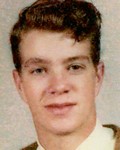
John Wade Wagner
Missing since February 17, 1968 from Monroe City, Marion County, Missouri
Marks, Scars: Has “tic tac toe” shaped scar on stomach.
John Wagner was last seen dropping off his brother at a school dance at approx 20.00 on February 17, 1968 in Monroe City, MO. John failed to pick up his brother after the dance. The truck that John was driving was found in an alley off of Main Street in Monroe City, MO. John Wagner has not been seen or heard from since.
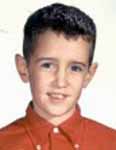
David William Adams
Missing since May 3, 1968 from Issaquah, King County, Washington
Distinguishing Characteristics: Dimple in left cheek.
David Adams went missing May 3, 1968, while returning alone from a friend’s house to his home on the 14000 block of 240 Avenue S.E. More than 1,000 searchers, with the aid of dogs, combed Tiger Mountain in the days following his disappearance, but he was never found. David was a third-grader at Clark Elementary School at the time.

Robert James Brown
Missing since August 3, 1968 from Pefferlaw, Nazarene Camp, Ontario, Canada
Clothing: Plaid, red and black shirt; blue jeans and black work boots.
On August 3, 1968, at approximately 16:30, Robert James Brown was last seen walking to his residence in the Village of Wilfred, Ontario, from the Nazarene Camp. The Nazarene Camp was a Christian camp where Robert’s mother worked as a volunteer. He failed to arrive home and was reported missing to the Georgina Township Police Service. The investigation revealed that a person matching Robert James Brown’s description was observed in the vicinity of Georgina Beach at the approximate time that Robert was last seen. Numerous land and water searches failed to locate him.

Sammy Lloyd Jackson
Missing since December 14, 1968 from Monterey, Monterey County, California
Distinguishing Characteristics: White male. Brown hair; brown eyes.
Jackson was last seen fishing with Alfred Grimes on December 14, 1968 in Monterey, California.
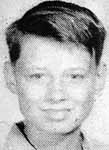
Roger Dale Madison
Missing since December 16, 1968 from Sylmar, Los Angeles County, California
Marks, Scars: None
Roger Dale Madison was last seen on December 16, 1968 in Sylmar, CA. He was a friend and classmate of the son of serial killer Mack Ray Edwards. Edwards told police he stabbed Madison repeatedly while they were in an orange grove and that he buried him under the 23 Freeway in Thousand Oaks which was under construction. Edwards was working on the project and said he used a bulldozer to bury the youth. In March 1970, Mack Ray Edwards surrendered to police and confessed to murdering 6 children between 1953 and 1970. He once claimed to have killed 18 but in 1971 while on death row he committed suicide. Edwards confessed and was convicted of the murder of Gary Rochet, Donald Allen Todd, and Stella Darlene Nolan. He also confessed to killing Brenda Jo Howell, Donald Lee Baker, and Roger Dale Madison. He was never charged with the murder of these children because their bodies haven’t been found.

Bob Louis Richard Boyes
Missing since December 26, 1968 from Port Republic, Calvert County, Maryland
Marks, Scars: He has a scar on his upper lip.
Boyle was last seen in Port Republic, Maryland on December 26, 1968. He has never been seen or heard from again.

James Richard Howell
Missing since May 28, 1969 from Sterling, Whiteside County, Illinois
Clothing: Blue jeans and a white T-shirt. White tennis shoes.
Howell and his sister, Debra, were playing in the front yard of their home on West 13th Street in Sterling, Illinois on May 28, 1969. Jim was going to build a cage for his birds. Deb went into the house to get some nails and a hammer. When she returned about a minute later, the boards Jim had with him to build the cage were scattered along the street in front of the residence and Jim was gone. Newspaper reports from days, months and a year after Howell’s disappearance reveal several supposed sightings of the boy. A newspaper account states Howell’s stepfather saw him a short time after he apparently left home looking for wood to build a birdcage, across the alley with another boy from the neighborhood, and a neighbor reported seeing him walk across a nearby field with the pigeon under his arm. Police were notified the following day, after the boy’s mother and stepfather apparently had spent the night searching for him. A neighbor called at 22:35 on May 28, 1969, to report Howell’s disappearance.
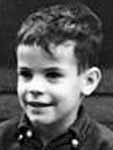
Dennis Lloyd Martin
Missing since June 14, 1969 from Spence Field, Blount County, Tennessee
Dentals: At the time of disappearance he was missing one front tooth.
Dennis Martin disappeared on June 14, 1969 from the Spence Field area of the Smoky Mountains National Park. Martin was last seen between 14.00 and 16.00 that day as he played a game of “Hide and Seek” in the park, near the Appalachian Trail. He disappeared behind a bush in the area and has never been seen again. He lived in Knoxville, Tennessee with his parents. He was a special education student at the time of his disappearance. At the time of the disappearance, his father described Dennis as a husky, healthy boy who was not particularly afraid of anything. He had some experience camping and hiking in the mountains with his family.
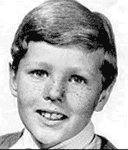
Steven Paul Newing
Missing since September 2, 1969 from Fakenham, Norfolk, England, United Kingdom
Distinguishing Characteristics: Freckles.
Newing was playing near his home in Lee Warner Avenue, Fakenham, just days before his 11th birthday when he vanished. One theory was that he had fallen down a disused well shaft of an old sawmill nearby, but it is widely believed that he was abducted. A hostel was named after him in May 2003 in Fakenham and dedicated by his mother Jean. It is for young homeless people between the ages of 16 and 25.
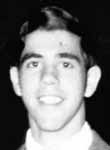
Patrick Paddon
Missing since November 1969 from Dartmouth, Nova Scotia, Canada
Items: He had flares and a rifle, matches and food in his knapsack.
In November of 1969, Patrick Paddon was hunting with his father and uncle in woods near the Upper Stewiacke and Riversdale areas of Colchester County. Patrick told his uncle he was going to cross a road in the woods and his uncle said they’d meet him there. He just went across the road but that was the last time anyone saw him. A Grade 11 student at Prince Andrew High School, Patrick was the subject of an extensive search in a 72.5-square-kilometre search area that continued for two weeks. Not a trace of him was ever found.

Peter Joseph Bonick
Missing since February 22, 1970 from San Mateo, San Mateo County, California
Distinguishing Characteristics: One shoulder blade is larger and/or higher than the other shoulder blade due to Idiopathic Scoliosis.
Bonick was last seen in in the morning hours at his residence in the vicinity of the 2000 block of Ginnever Street in San Mateo, California on February 22, 1970. He was later seen hitchhiking on SR-92 to Half Moon Bay, California. He has never been heard from again.
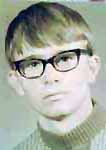
Jimmy Allen Williams
Missing since November 20, 1970 from Sayre, Beckham County, Oklahoma
Clothing: Denim jeans; boots; possibly a denim jacket.
On the night of November 20, 1970, Jimmy Allen Williams, Thomas Michael Rios, and Leah Gail Johnson were riding around Sayre, Oklahoma in Jimmy’s 1969 blue Chevrolet Camaro with white top and tag number BK 3610. (VIN 124379L517123). Although, when Jimmy left home for the evening he was supposed to be going to a football game in Elk City, Oklahoma, the possibility exist that he was going to go hunting on Turkey Creek road with Thomas Michael Rios and Leah Johnson. The road referred to as Turkey Creek road is E1230 although the they could have been on E1220. (between N1810 and N1850) The three kids never came home that night, and have not been located since. Also the 1969 Camaro has never been located. Jimmy’s Social Security number has never been used since that time and the vehicle identification number has never turned up.

Michael Duane Burnett
Missing since March 17, 1971 from Oroville, Butte County, California
Marks, Scars: Missing part of left lung. He has a scar on the left side of his chest. A small scar by his right eye. He is left handed.
Michael was last seen on March 17, 1971, in Oroville. Michael left his house on Claremont Drive to walk to school. He apparently never arrived. There were no problems in his home life that would have caused him to run away. It is believed, however, he was attacked by boys from another school a few days before his disappearance. Foul play is suspected.

Douglas J. Legg
Missing since July 10, 1971 from Oswego County, New York
Clothing: Shorts and a short-sleeve shirt
Douglas Legg was visiting his uncle at the family estate on the Santonini Preserve in Newcomb. On July 10 Douglas headed out on a family hike into the nearby Adirondack wilderness. His uncle sent him back to the estate to change into long pants to protect himself from poison ivy. A clear trail led from where he left his family members to the house, which could be seen in the distance. But somewhere between those two points, Douglas disappeared and was never seen again. When he didn’t return, the family postponed the hike and began to look for him. It was about 15.30 when they last saw him.

Thomas Allen Meuse
Missing since August 9, 1971 from Schenectady, Schenectady County, New York
Marks, Scars: Scar on his left eyebrow from a dog bite.
Thomas was last seen in Schenectady, New York on August 9, 1971.

Johnnie Joe Herrera
Missing Since August 27, 1971
Distinguishing Marks/Features: Scar on the bridge of his nose. Burn mark on the elbow area (unknown which elbow) caused by the grill of a floor heater. Black mole or beauty mark on the top of one of his feet between the big toe and the next toe.
Herrera was last seen at a bachelor party in Oxnard, California, on August 27, 1971. He never returned home. His light blue VW Volkswagon, license ZWM775, was never recovered. There is no DMV history on the license plate.
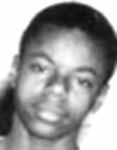
John Ashley, Jr.
Missing since December 14, 1971 from Wilmington, New Castle County, Delaware
Marks, Scars: Right hip congenital defect. Previous transverse (1-17-67) fracture of second metatarsal involving proximal portion.
John J. Ashley, Jr. was last seen walking home after attending school and basketball practice. Another 17 year old Wilmington boy disappeared the same night and was later found drowned, February 1972 in Wilmington.

Richard William Griener
Missing since January 17, 1972 from Pekin, Tazewell County, Illinois.
Clothing: Griener was wearing a gold colored nylon jacket with attached hood, a long brown ski mask, blue jeans, green rubber insulated boots and carrying a blue plastic roll up toboggan.
According to his mother, Richard Griener left home, which was located at Brentwood Court, at about 16.00 walking four blocks to a local snow sledding hill in the city park. He had to cross a large railroad switch yard to get there. He was seen by friends on the hill at about 17:30 and was never seen again.

Alewijn Sterk
Missing since April 24, 1972 from Amsterdam, Netherlands.
Medical: Suffered from bouts of depression.
Sterk was last seen in Amsterdam on April 24, 1972. He was moving in the alternative circuit. Sterk was active in the “anti-violence” movement.
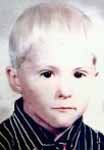
Adrian McNaughton
Missing since June 12, 1972 from Lake, Brougham Township, Ontario, Canada
Marks, Scars: Scar – 2 inches long on forehead – over which eye is unknown.
Adrian McNaughton who lived in Arnprior, was last seen wandering into a wooded area near Calabogie where he had been fishing with his father and three siblings on Holmes Lake — around 100 kilometres west of Ottawa, on June 12, 1972.
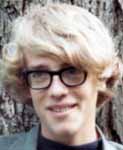
James Colin Egan
Missing since August 6, 1972 from Mequon, Ozaukee Co, Wisconsin
Distinguishing Marks: Left hand is slightly deformed from an accident.
James was last seen on August 6, 1972. He was last known to be traveling from California to Wisconsin. James called family from San Francisco, California on August 6, 1972 to inform them he was traveling back to Denver, Colorado to get a flight home to Wisconsin within the next week. Egan was hitchhiking. His family never heard from James again.

René Bessette
Missing since December 20, 1972 from Laval, Quebec, Canada.
Distinguishing Marks: Unknown
Bessette was abducted by his non-custodial father from Laval, Canada on December 20, 1972, leaving behind his mother, sisters and a brother. A few hours after the kidnapping, the father’s vehicle was found abandoned on the Victoria bridge in Montreal.
*
p.s. Hey. ** Dominik, Hi!!! Cool, long time no see! Your time away sounds busy and intense. Mine too, but I was mostly lying in bed in misery, so you win. I’ve been sick, but I’m fighting my way to post-sickness with relative success. This year? Gosh, tons of unknowable things, I hope. So good to see you. I missed you a lot too. Love lengthily missing in action but happy to be, G. ** Chris Kelso, No, I think you’re like me — capable of producing evil on the page but only pussycats IRL. Well, David Leo Rice is a good second recommendation, so maybe I’ll tiptoe into the first few pages at least. Excellent about the impending film. It’s true: post-production is a real trial by fire. It can be largely fun in ideal circumstances, but how often does that happen. Have a transcendent ’26. ** Laura, I can 100% assure you that I do not want to be Peter Orlovsky. I met him a couple of times and did a reading with him once. I knew Allen, and he was really not Verlaine-like in reality. Nice that you know Solomon’s films. The film world’s conservatism makes him hard to get to know. Yury’s asleep at the moment, but I’ll ask him once he has roused himself. Today? Seeing a chiropractor, I think, because my lower back is fucked up. It likes to fuck up on me a few times a year, and its timing always sucks. Otherwise, the usual catching up. ** Uday, And happy New Year to you! I’ve never bought the NYE hype. I guess everyone aligning their days so that they all party at the same time once a year is kind of interesting. Yes, there’ve been at least a handful of posts that have been restored more than once. Usually when I particularly like it and time/internet changes has destroyed it. ** Dev, I believe you. Although everyone thought he was good in the Dylan film, and I certainly did not. I’ll test it at some point. Good to know these things. Thanks, pal. ** Jack Skelley, I’m feeling better from the waist up, but my back went out, so I’m shit from the waist down. Temporarily. Fucking life, man, what the hell is next?! ’26 should be a corker though. For you and me both. No? Sunday’s your big day, get ready, xo, me. ** jay, His films are gorgeous. Have I already asked you if you’ve played ‘Clair Obscur: Expedition 33’? Seems like everybody’s going crazy for it. And it’s French, so I’m curious. I’m chasing health like a wildcat, and it will relent or my name is not my name. Enjoy today’s chilly but bright whatevers! ** James Bennett, No argument at the moment on the antibiotics lionizing. Obviously luck with the Gluck shebang, and wish I could be there, duh. I think if you already know the Cycle, reading it backwards is totally fine. If you didn’t know it, I do think starting at the front is highly recommended if poss. Michael Silverblatt is the best reader, as they always say, and which is true. His show is so missed. Hug in return from me. ** Bill, I am doing better, but my lower back did its rebellious number on me, so now I have to fix that. Solomon’s stuff is wonderful. ** Carsten, Well, Yury was my boyfriend for a long time but not anymore. So that’s probably why. The illness recovery is good. My back went out, and it’s painful as fuck, so now I have to fix that, but that should be easy, I hope. Normal does seem like a pipe dream. ** Connie, Cool. The socks thing. One of the main characters in Zac’s and my next film is a little boy who makes hand puppets out of his dad’s old socks. Not getting Xmas gifts anymore is compensated by not having to give others Xmas presents. So now Xmas is all atmosphere, which is kind of nice. They claim it’s going to snow here all next week, but they’ve said that before and then 5 minutes of scattered flakes is what ensues. Utrecht is a nice city. And it’s a quick hour or less from Amsterdam. That sounds promising. ** Steeqhen, I did three days of steroids, and, yeah, they certainly helped. Orly is so convenient now that the 14 line goes there. Beavais, on the other hand, is hell. I would assume encyclopedic knowledge is the top priory for the Dr. Who store. It must be Who Geek central, no? ** HaRpEr //, HNY! Yeah, I think that might be my favorite Solomon. Worth trying for sure, it sounds like. When I was in LA last, my roommate was obsessed with some British TV program where celebrities pose as life models for amateur painters and you watch the celebrity pose and the painters paint. It was strangely interesting. They weren’t nude though, being celebrities and everything. Your thinking about the state of your current writing is exciting. ** Dr. Kosten Koper, HNY to you! I don’t know, but it wouldn’t surprise me in the slightest if that title is an Ochs reference. Yes, RIP Ken Downie. That was sad news. I really liked The Black Dog. I think they’re referenced in my novel ‘Guide’ even. Let me … Everyone, Dr. Kosten Koper suggests you take a listen to The Black Dog’s great track ‘Virtual’, and I concur. He says. ‘Youngsters out there bear in mind this Allen Ginberg sampling (“world world world I sit in my room and imagine the future”) monster came out in 1989’. Here. ** Okay. Today I give you another one of these melancholy posts of a certain sort that I seem to like to make. See you tomorrow.
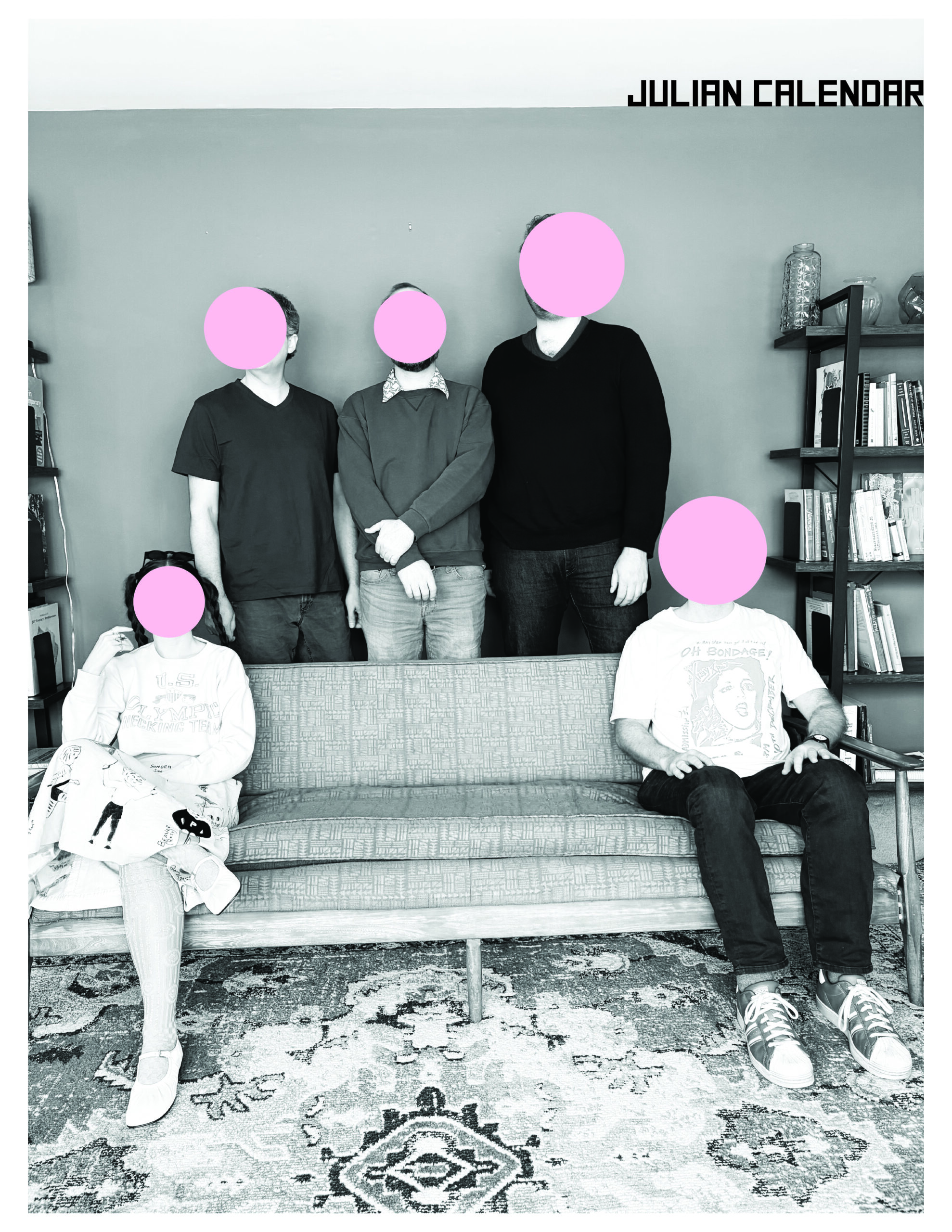
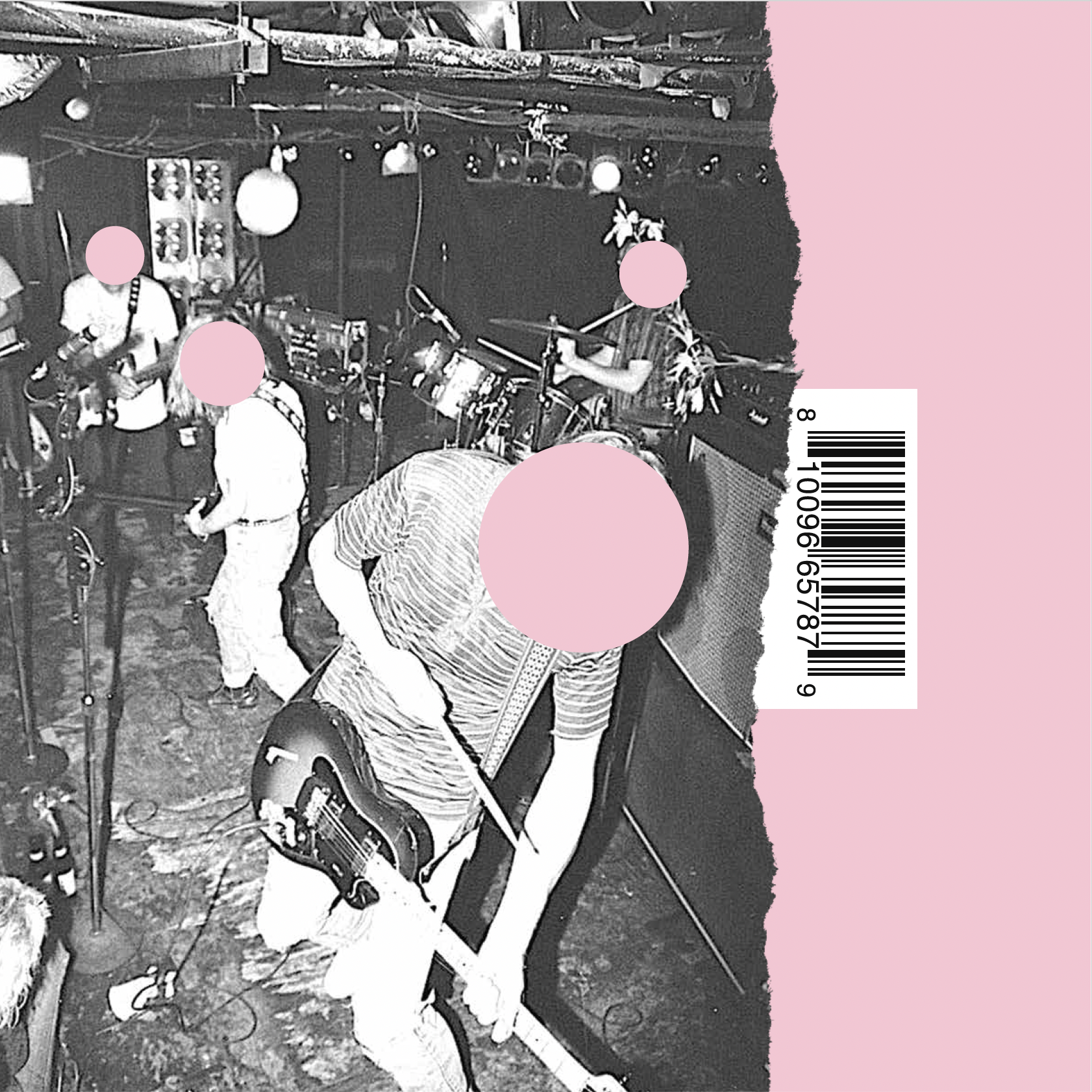
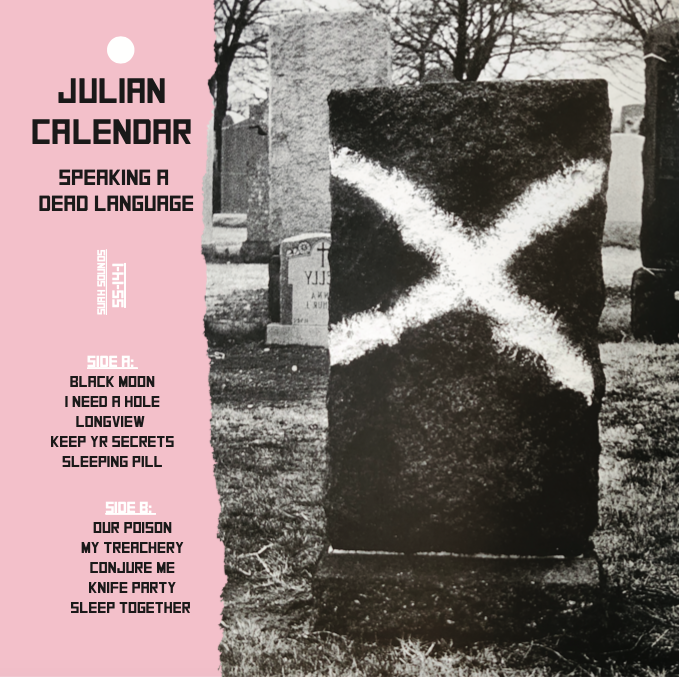
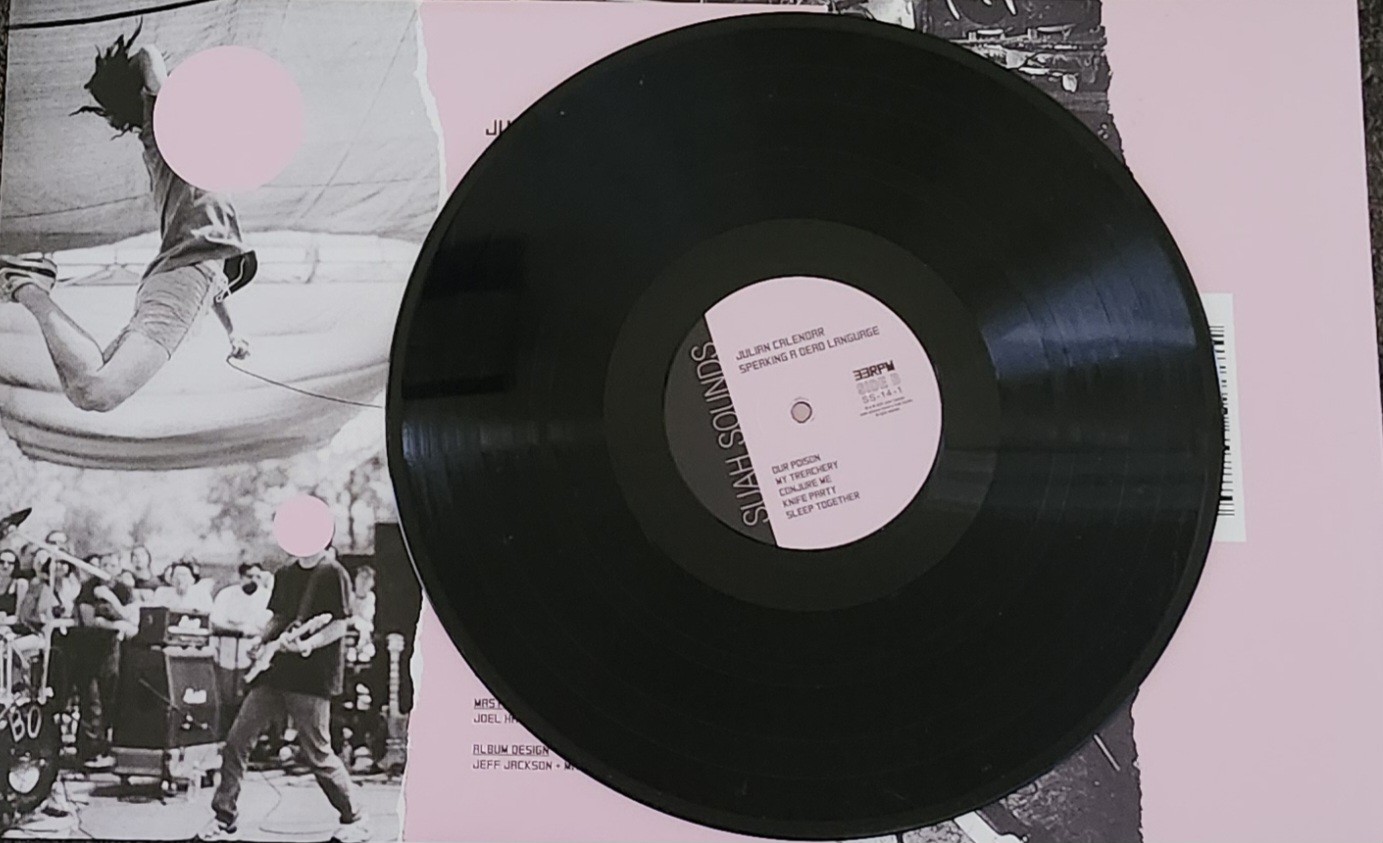
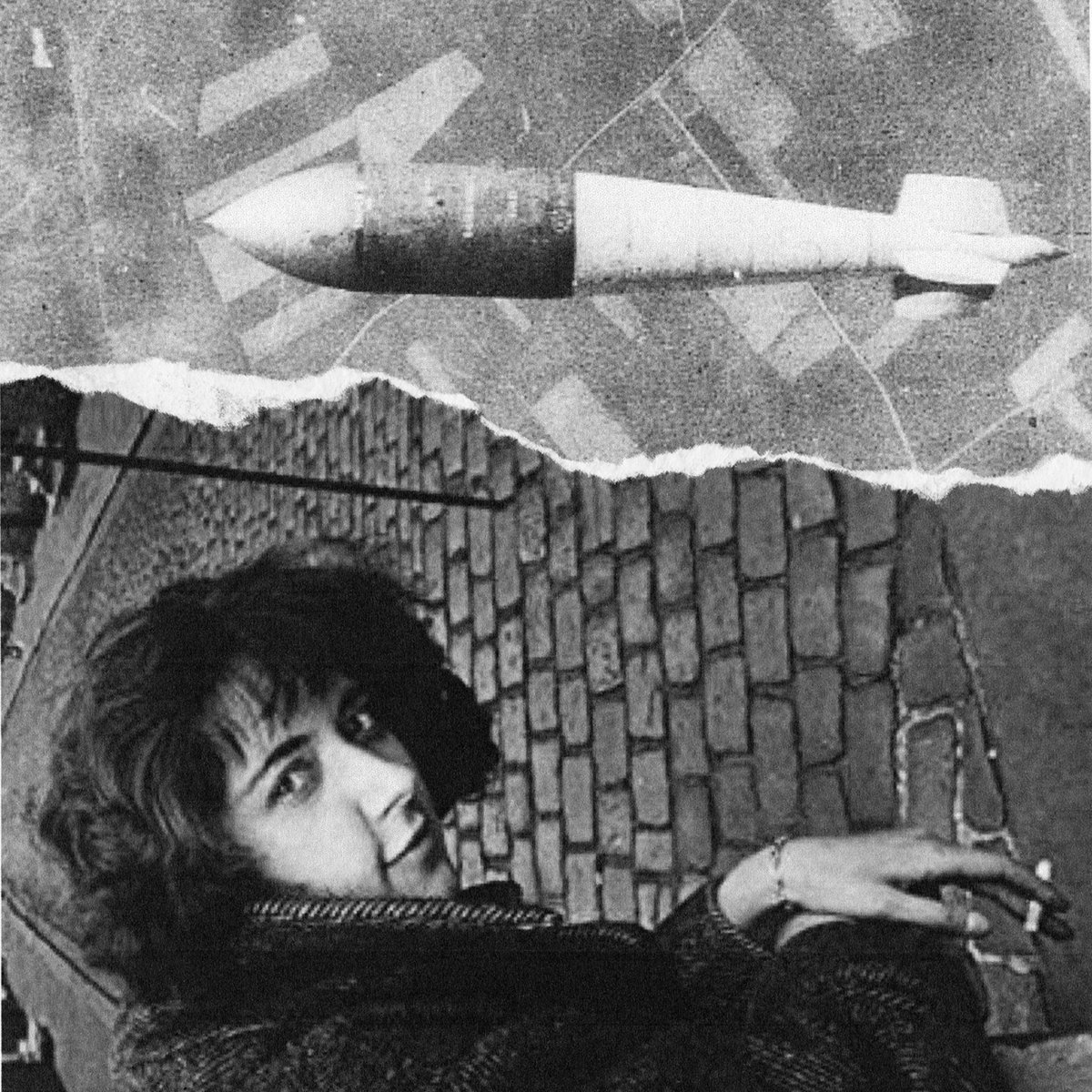




















































 Now available in North America
Now available in North America 